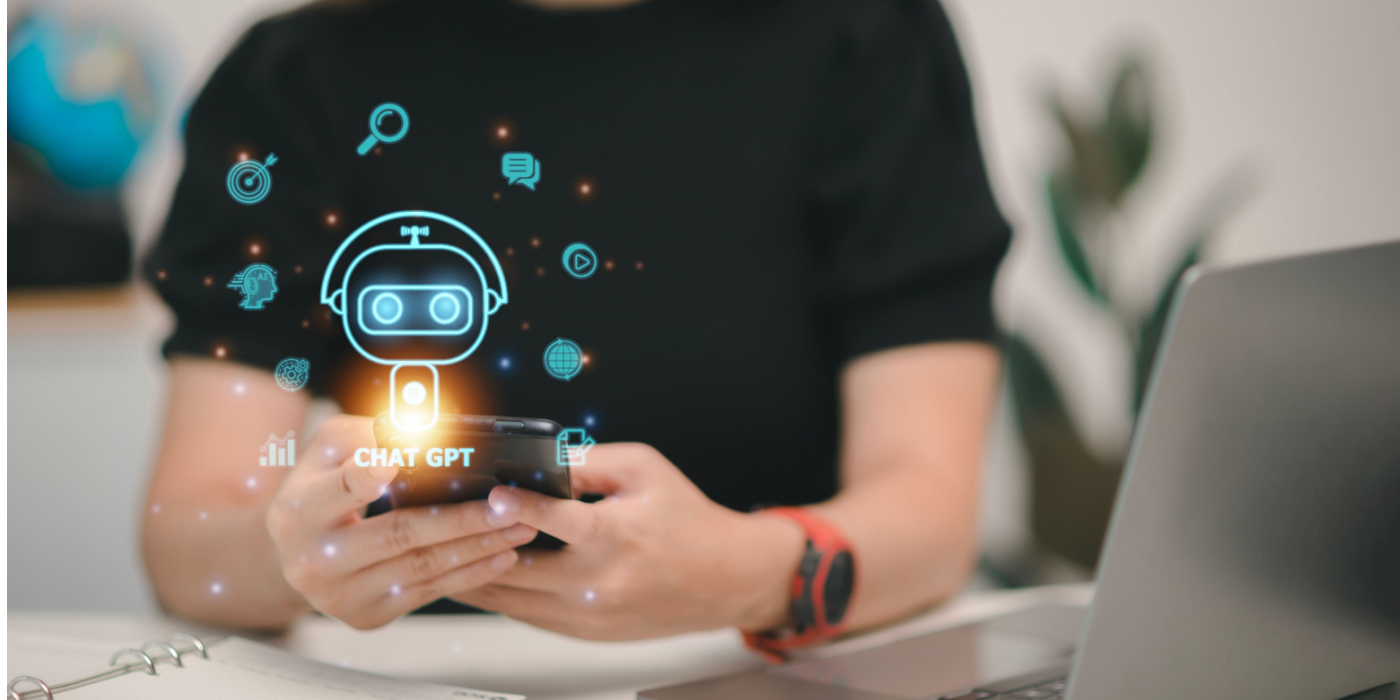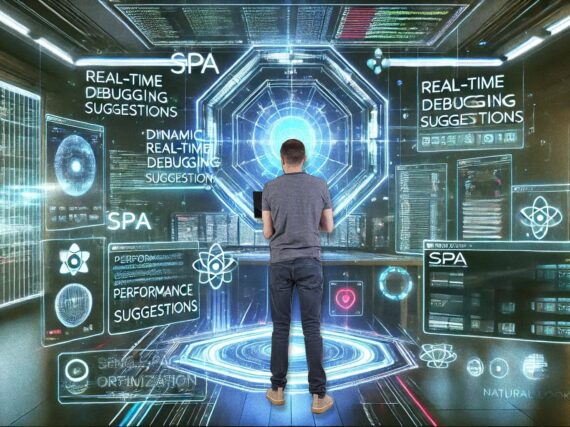Welcome to the March 2023 AI Newsletter from the GovWebworks AI Lab. The following articles touch on important topics in the industry, including:
- Release of GPT-4 on March 14
- Think of ChatGPT like a junior employee
- AI is changing how we search
- How does ChatGPT generate text?
- Conversations instead of keywords
- How to play around with ChatGPT
Feel free to share this info with your colleagues and encourage them to sign up for the AI Newsletter and join the conversation! Or email us at ai@govwebworks.com to talk about using AI to optimize your organization’s digital goals.
#1: Release of GPT-4 brings new capabilities
Key takeaway: GPT-4 advances ChatGPT (Generative Pre-Trained Transformer) with a number of new features.
Reviewed by GWW Staff
The release on March 14, 2023 of GPT-4 brings additional features to the much discussed ChatGPT released in November 2022. OpenAI claims that GPT-4 has greater problem solving abilities as well as other new features. It can now use images as inputs, which means it can generate text based on an image. It is also capable of handling 25,000 words of text, about eight times more than GPT-3. While GPT-3 was trained with 175 billion parameters, GPT-4 is based on 100 trillion parameters. It is able to perform longer-form content creation, hold more in-depth conversations, and search and analyze documents more effectively, according to OpenAI.
OpenAI claims, “The difference comes out when the complexity of the task reaches a sufficient threshold — GPT-4 is more reliable, creative and able to handle much more nuanced instructions than GPT-3.5.” As for the image input feature, OpenAI claims that if someone inputs an image of the inside of their fridge the tool can identify the contents and suggest recipes for those ingredients.
GPT-4 is currently only available to paid users of OpenAI’s ChatGPT Plus. Developers must join an API waitlist to access GPT-4. Government agencies will want to consider how and when their audiences will begin to expect the use of GPT tools.
Resources:
#2: Think of ChatGPT like a junior employee, still requiring plenty of oversight
Key takeaway: Most AI tools are not ready for unattended automation.
Reviewed by Adam Kempler
Tools like ChatGPT are changing the way we create and find content. From natural language inputs for search engines, to help creating all kinds of content. However, for now, we need to temper expectations for the output of many of the new generative AI tools and assume the need to provide oversight and review. The article Make ChatGPT Your Intern, Not Your Boss details some technical aspects of the efficacy of ChatGPT for providing accurate and useful results.
In my mind, the most important takeaway is the title of the article itself. If we think of these tools like interns, then we are correctly managing expectations.
- The output of these tools needs oversight and review.
- The output will likely need tweaking just like an intern or junior employee.
However, just like an intern, we can expect the quality and accuracy of the results to improve and need less oversight as time goes by.
Resources:
#3: AI is changing how we search
Key takeaway: ChatGPT is “resonating” with users.
Reviewed by Adam Kempler
AI is at the forefront of a transformational change in how humans search for information online. It allows us to ask more complex questions and receive more detailed and rounded answers. Users this year will start making the shift from browsing through search results and clicking link after link, to letting the AI assistant answer their questions and provide all the meaningful information summarized in a single response, with links to more details if they want it. In How AI will change the way we search, for better or worse, Andrew Tarantola describes how GPT is “resonating with so many people.”
Why is this important? One thing the article said that stands out to me is that it is changing public perception and expectations as to how we can search for and digest results. Traditional keyword-based search will quickly become seen as inefficient and a “legacy” approach. At the same time, there will be errors in machine search information just as there are errors in human content, so, like with other ChatGPT tools, we must use with caution.
Government agencies are advised to start exploratory pilots into how they can leverage tools like GPT to empower and educate their audiences and stakeholders to explore new ways of searching for information.
Resources:
#4: How does ChatGPT generate text?
Key takeaway: ChatGPT adds one word at a time based on probability.
Reviewed by GWW Staff
As explained by Stephen Wolfram, developer of Wolfram Language, ChatGPT writes sentences by scanning instances of text that use the same phrase and determining the probability of the next word in a sequence. The key is that it doesn’t use the word with the highest probability as that has been found to produce less interesting text. Instead it selects a word at random from the list of high probability words. There’s what’s called a “temperature’ parameter that determines how often and when the ranked words are used.

The actual code behind how ChatGPT works is of course much more complicated, see above. But the important thing to note is that it learns in ways that are similar to how the human brain learns language. While it may not currently be able to recompute on data to refine and update text based on new probabilities, it can learn more about how to do so as it gains more information.
What does all this mean for government agencies? Basically that if you haven’t yet, it’s time to pay attention to how this new technology works so you can make educated decisions on how and when to use it.
Resources:
#5: Conversations instead of keywords
Key takeaway: ChatGPT is being integrated into everything.
Reviewed by GWW Staff
Natural language inputs are quickly becoming a universal method of communicating with the web and software. From search engines to productivity apps and design tools, conversational interfaces are becoming the de facto method for application interaction. Some examples of how ChatGPT is being used include the following:
- Microsoft Outlook is using GPT to improve search results, suggest email content, and offers ways to improve writing in Word
- Logz.io has tools to help with tech support and improve issue response times
- Opera has a tool that summarizes information into bulleted lists on the sidebar of webpages
Resources:
- Microsoft to demo its new ChatGPT-like AI in Word, PowerPoint, and Outlook soon
- Using chatgpt to provide support
- Opera’s building ChatGPT into its sidebar
#6: Haven’t had a chance to play around with ChatGPT yet?
Key takeaway: Trying ChatGPT is as easy as setting up an account.
Reviewed by Adam Kempler
To gain a better understanding of ChatGPT, anyone can set up an account with OpenAI and try out the ChatGPT Playground. Playground is able to predict the language that would be used to answer questions and write essays or stories. Account holders can try out basic features of the AI tool, from asking it to write something in a certain style or respond to questions in a Q&A format. Similar to DALL-E, the companion technology that creates images that uses available images to create images based on user prompts, results are not direct plagiarism so much as an interpretation of previous information. There are controls to change the “temperature” or degree of probability of the words used to make responses more or less logical, and the “frequency” of repetition for varying results.
Keep in mind that while this technology can write college essays and pass a bar exam, it is considered a form of plagiarism by schools and should be used with that caveat in mind.
Resources:
- How to use OpenAI Playground, the ChatGPT alternative that can write nearly anything for you
- How to use Chat GPT to write an essay
Learn more
- Sign up for the AI Newsletter for a roundup of the latest AI-related articles and news delivered to your inbox
- Find out more about using AI to optimize your organization’s digital goals








